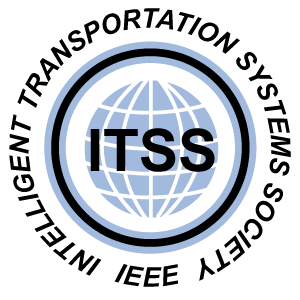2020 IEEE Vehicular Networking Conference (VNC)
December 16–18, 2020 | Virtual Conference
Information for Presenters
Preparing Presentation Videos
Beyond submitting your camera-ready paper, you are also expected to prepare and upload two presentation videos to the edas platform. These videos are due on December 4th.
The full-length video can have a maximum length of 15 minutes for accepted full papers and 10 minutes for accepted short papers and will contain your main presentation that the audience will watch asynchronously a few days before your session. This should include your regular slide presentation recorded as a screencast. Overlaying this with a video of yourself giving the presentation provides an additional benefit to your online audience and is strongly encouraged. Of course, you can put extra effort into your video, e.g., showing a short demo of a system you present in your video, animations of experiments, and many more. The overarching goal should be to illustrate and present your content in the best accessible way for an online audience. This also means, you should consider aspects like font-size, proper video resolution, etc. We will discuss technical details in more detail below.
The short summary video can have a length of 1-2 minutes and should provide a very condensed summary to remind the participants in your session about the content of the full video. So make sure you include the core elements and key findings of your paper. These videos will be played online at the beginning of your session right before discussions start. The minimum would be to recap a well prepared summary slide of your talk, but again, your creativity is required here to find out how to ideally summarize your talk.
Here are a few more recommendations and details for preparing your videos:
- Make sure that you stick to the maximum video lengths. Longer videos will be rejected and you have to prepare a new version. Not providing a properly formated video is equipvalent to a no-show at a regular conference and will lead to your paper being removed from proceedings
- Videos should be prepared in either 720p or 1080p HD and use an MP4 video format with H.264 (or optionally H.265) codec. SD videos do not provide suffcient resolution to see details on slides. Please do not prepare 4K or 60fps videos as they consume unneccessary bandwith. Do not use other video codecs that might not work on participants' computers. The bitrate should not exceed 1 Mbps to avoid video files to become too large.
- When recording your video, the most important aspect is to provide good audio quality. So please review your recording critically. Do your recording in a noise- and echo-free environment. Use a dedicated microphone close to your mouth, but not directly in front of your mouth to avoid pop sounds) for the recording. If you record a video of yourself presenting, make sure you have proper lighting. While professional equipment can be quite expensive, there are often also good cheap alternatives. The microphone from a smartphone headset typically works quite well, echo in your room can be reduced by spreading out towels or cloth, and good lighting is often a matter of positioning yourself in the proper angle to a window and using your smartphone flashlight in addition. So it is more about creativity and careful preparation than about spending horrendous amounts of money.
- For recording your presentation, there are also good and free-to-use tools, we particularly recommend the Open Broadcasting Studio (https://obsproject.com/), which might require a little initial training and testing, but then often provides excellent results and allows you to easily mix your slide presentation with the speaker video. Auphonic (https://auphonic.com/) can be used to give your audio the latest polish. Handbrake (https://handbrake.fr/) provides good results when you need to convert your videos to MP4. There is an abundance of tools for video-editing (e.g., to cut out mistakes you made during recording). DaVinci Resolve is a powerful but also complex video editing software that has a free version. Apple and Windows computers also come with free video editing software (iMovie or Windows Movie Maker) that may be a lot easier to use. Likewise, there are many other good and free tools and you may already run a suitable setting for recording lectures or videos for your organization.
- It is important that you start preparations early and run a couple of audio and video tests before doing the final recording. Expect that not everything will work out in the first try.
Additional Information for Presenters participating in Online Sessions
(helpful also to regular participants)
At least one of the authors is required to join the discussion session of your paper to answer questions of the audience. You will be supported by a session chair who will help you with organizing participant's questions.
You need to prepare your technical setup audio/video similar to what you already prepared for the recording.
Whereever possible, you should not rely on WiFi when attending your session. Directly attaching to your Internet router using an Ethernet cable can already eliminate one of the main sources for troubles.
We will offer a number of technical test sessions before start of the conference. Dates and dial-in details will be provided in time.
During discussions, you should turn your camera on so that you are visible to the audience. Session chairs will manage rights the microphone and video settings accordingly. If you are not able to use video for whatever reason (environment, Internet connection, etc.), please let us know beforehand.



